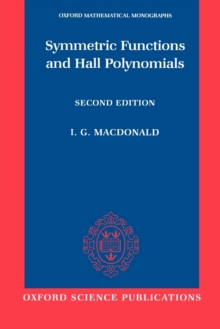
Hyperbolic Dynamics and Brownian Motion : An Introduction PDF
by Jacques Franchi, Yves Le Jan
Part of the Oxford Mathematical Monographs series
Description
Hyperbolic Dynamics and Brownian Motion illustrates the interplay between distinct domains of mathematics.
There is no assumption that the reader is a specialist in any of these domains: only basic knowledge of linear algebra, calculus and probability theory is required. The content can be summarized in three ways:Firstly, this book provides an introduction to hyperbolic geometry, based on the Lorentz group.
The Lorentz group plays, in relativistic space-time, a role analogue to the rotations in Euclidean space.
The hyperbolic geometry is the geometry of the unit pseudo-sphere.
The boundary of the hyperbolic space is defined as the set of light rays.
Special attention is given to the geodesic and horocyclic flows.
Hyperbolic geometry is presented via special relativity to benefit from the physicalintuition. Secondly, this book introduces basic notions of stochastic analysis: the Wiener process, Itô's stochastic integral, and calculus.
This introduction allows study in linear stochastic differential equations on groups of matrices. In this way the spherical and hyperbolic Brownian motions, diffusions on the stable leaves, and the relativistic diffusion are constructed. Thirdly, quotients of the hyperbolic space under a discrete group of isometries are introduced.
In this framework some elements of hyperbolic dynamics are presented, as the ergodicity of the geodesic and horocyclic flows.
This book culminates with an analysis of the chaotic behaviour of the geodesic flow, performed using stochastic analysis methods.
This main result is known as Sinai's central limit theorem.
Information
-
Download - Immediately Available
- Format:PDF
- Publisher:OUP Oxford
- Publication Date:16/08/2012
- Category:
- ISBN:9780191655487
Information
-
Download - Immediately Available
- Format:PDF
- Publisher:OUP Oxford
- Publication Date:16/08/2012
- Category:
- ISBN:9780191655487










